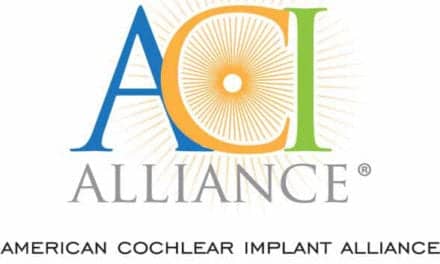The music business can be a feast-or-famine endeavor, with gigs waning for a variety of reasons, including the effects of the global pandemic. But regardless of their economic situation, musicians need hearing care (enhancement or protection) in good times and bad.

According to Hans Zandhuis, president of Ally Lending, the younger generation—musical or not—is moving away from using a credit card for larger purchases and instead opting for a specific installment loan or line of credit for substantial healthcare or retail purchases. “We think this trend extends to baby boomers,” he says, “which is the younger side of audiology.”
Zandhuis calls credit card financing relatively “stagnant” while point-of-sale financing (paying for a purchase the same day and paying it off over time) is growing consistently every year. “We think all of those trends are in the healthcare provider’s and the consumer’s favor,” he says. “Instead of having this big chunk of debt on a credit card, you would have a loan to pay for a hearing aid…People like being able to allocate their spending in smaller, regular amounts they can plan for and reserving their credit card for emergencies and vacations.”
In the case of musicians, financing options not only make hearing care more accessible, the cash they free up could come in handy for travel expenses or instrument repair.
In addition to the financing piece, smart marketing approaches make a big difference. For audiologists who love music and want to help the musical community with their hearing needs, Marshall Chasin, AuD, owner of Toronto-based Musicians’ Clinics of Canada, is adamant; nothing beats word of mouth—even in the digital media age.

“Word of mouth is a primary element,” says Chasin, who has worked with many inductees of the Rock n’ Roll Hall of Fame. “Usually you will see the bass player or the drummer first. These people tend to be the most open toward fixing something. They aren’t the divas.”
More than paid forms of advertising, Chasin recommends getting in front of people—in person. Much like music itself, the marketing is best when it’s live. It’s true that there is a global pandemic, but people in the United States started getting immunizations on December 14, and many people could well be inoculated by the end of Spring 2021. So start the preparations and invitations now, he says.
“Give talks to your local bands or orchestras,” Chasin says. “There are many senior citizens who are in a community band. Maybe after their rehearsal, give a short talk about what they can do from a hearing protection perspective, as well as from a hearing aid and music perspective. Build your reputation musician to musician the old fashioned way by getting out there and talking one-to-one. Mass media and social media are not as effective.”
Most musicians come in for complaints about hearing normal speech, as opposed to hearing music. With that in mind, Chasin stresses that, “One cannot assume that a hearing aid that has been optimized for speech will be optimized for music, and conversely many people assume that if a musician has a hearing aid that’s great for music, then it will be great for speech, but that doesn’t follow. The reason is that music, even quiet music, is far louder than speech.”
Finally, audiologists working with serious musicians should know that usually less is more. Chasin explains: “For speech, we tend to have all these bells and whistles in hearing aids that are very useful, but many of them need to be disabled in favor of other less high-tech routes for music. We want to have compression that is less active for music. We want to disable the frequency compression for music.
“A musician might want to have a more entry-level hearing aid as long as certain minimum requirements are met,” Chasin continues. “One is that the hearing aid needs to be able to handle higher-level inputs that are notorious for creating distortion. This is called your front-end peak input limiting level. When the digital hearing aids go through the analog/digital conversion, many have a ceiling or limiter that is okay for speech, but will clip or distort during music.”





